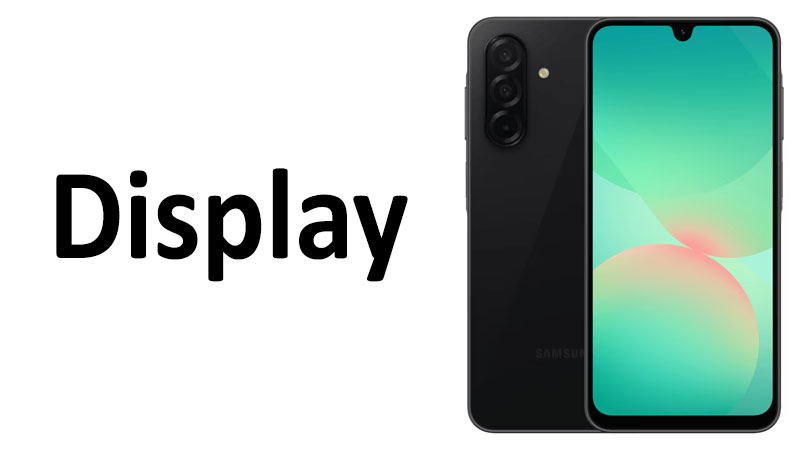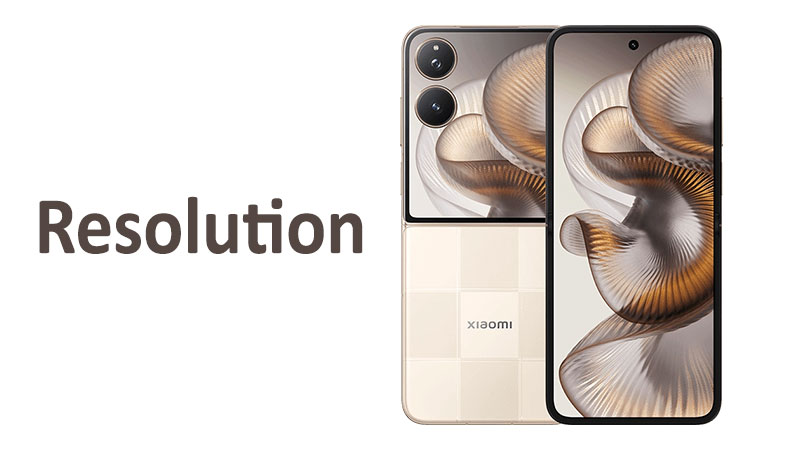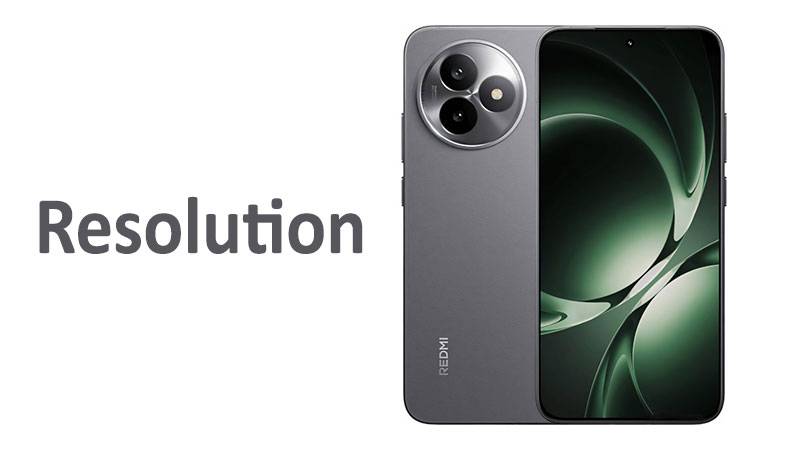The Samsung Galaxy A26 display immediately establishes the device as a strong contender in the mid-range sector. It boasts flagship-level screen technology. This is a crucial area where Samsung often outperforms its direct rivals. The display serves as the primary gateway to the user experience. Its characteristics determine everything from battery efficiency to daily usability under bright sunlight.
This review will thoroughly dissect every technical aspect of the A26’s screen. We will examine the quality of its Super AMOLED panel. We will also assess the smoothness offered by its high refresh rate. Finally, we will cover the durability provided by its advanced protective glass.
Detailed Display Specifications Analysis
The Galaxy A26 screen arrives with a robust set of hardware specifications. These specs are designed to deliver a premium visual experience at an accessible price point. Understanding these technical details is the first step in appreciating the display’s capabilities.
Panel Technology: Super AMOLED Advantage
The Samsung Galaxy A26 utilizes a Super AMOLED panel. This choice is significant. AMOLED, or Active-Matrix Organic Light-Emitting Diode, is a self-emissive technology. This means each pixel generates its own light. It does not rely on a separate backlight layer, unlike traditional IPS LCD screens.
The “Super” designation highlights Samsung’s specific advancements in this technology. Super AMOLED panels integrate the touch-sensitive layer directly into the screen structure. This design eliminates the gap between the display panel and the touch sensor. The result is a thinner display module and reduced light reflection. This provides better visibility, especially outdoors.
Benefits Over IPS LCD Competitors
Super AMOLED offers several distinct advantages, particularly over IPS LCD screens common in this price segment.
First, contrast is infinite. When displaying black, the pixels simply turn off completely. This delivers perfect, true black colors. IPS LCDs, by contrast, rely on a constant backlight. This results in blacks appearing as a dark gray or washed-out tone. This deep black level vastly improves the viewing experience for movies and dark-mode application use.
Second, color reproduction is highly vibrant. AMOLED technology typically covers a wider color gamut, offering rich saturation. While some users may find the colors overly saturated, Samsung provides color profile settings. These allow users to adjust the display to a more natural or cinema-level color tone.
Third, power efficiency is improved when displaying dark content. Since black pixels are off, they consume no power. This makes dark mode an effective tool for extending battery life on the Galaxy A26. This efficiency is a major differentiator compared to IPS panels, which consume constant power regardless of the content displayed.
Fluidity and Responsiveness: The 120Hz Refresh Rate
The Galaxy A26 features a 120Hz refresh rate. The refresh rate dictates how many times per second the screen updates the image. A standard refresh rate is 60Hz. The 120Hz rate means the screen updates 120 times every second.
This high refresh rate provides a dramatically smoother and more fluid visual experience. This difference is most noticeable during specific actions. Simple activities like scrolling through social media feeds or navigating system menus feel instantly snappier. Animations appear less choppy and far more continuous.
Impact on Gaming and Daily Use
For mobile gamers, the 120Hz rate is a major performance booster. Games that support higher frame rates (up to 120 frames per second) can render movement with exceptional clarity and reduced motion blur. This improves competitive gameplay. It gives the user a slight advantage due to reduced visual latency.
In terms of responsiveness, 120Hz screens generally have a faster pixel response time. Combined with Samsung’s optimized touch sampling rate, the phone feels more direct and responsive to user input. This enhancement in responsiveness is part of what gives the phone its fast, polished feel during everyday operation.
However, a higher refresh rate consumes more battery power. To mitigate this, modern phones like the A26 often employ an adaptive refresh rate system. This system automatically scales the refresh rate down to 60Hz or lower when displaying static content. This smart management balances high performance with battery conservation.
Dimensions and Visual Density
The physical dimensions and pixel density are fundamental to the immersive viewing experience. The Galaxy A26 strikes a careful balance between screen real estate and handling comfort.
Screen Size: 6.7 Inches of Real Estate
The device sports a large 6.7-inch display. This size is well-suited for media consumption, multitasking, and reading. The generous screen area enhances the viewing of streaming video, digital books, and complex applications.
The screen-to-body ratio is approximately 86.7%. This figure is a measure of the display area compared to the phone’s overall front surface. A higher ratio indicates thinner bezels. The 86.7% ratio confirms the A26 employs a modern design with minimized borders. This maximization of screen space contributes to the feeling of immersion.
In comparison to its predecessor, the Galaxy A25, which featured a 6.5-inch screen, the A26 offers a noticeable bump in screen size. This increase provides more usable area without making the phone excessively bulky. For users upgrading from older, smaller devices, the 6.7-inch panel offers a significant quality-of-life upgrade for content viewing.
Resolution and Pixel Density
The display resolution is 1080 x 2340 pixels. This is commonly referred to as Full HD+ or FHD+. The aspect ratio is 19.5:9, a tall and cinematic format ideal for watching movies and scrolling.
This resolution yields a pixel density of approximately 385 pixels per inch (ppi). Pixel density is crucial because it determines the sharpness and clarity of the image. At 385 ppi, the display is certainly sharp enough for the vast majority of users. Individual pixels are virtually indistinguishable during normal usage distances. Text is crisp, and detailed graphics render cleanly. This FHD+ resolution is also highly efficient. It requires less processing power from the GPU compared to higher resolution displays like QHD+ or 4K. This efficiency helps maintain the high 120Hz refresh rate and ensures better gaming performance without excessive heat generation.
Durability and Protection
A high-quality display must be protected by equally robust materials. Samsung equipped the Galaxy A26 with premium protective glass technology.
Corning Gorilla Glass Victus+
The screen protection is provided by Corning Gorilla Glass Victus+. Corning’s Victus series represents a significant leap forward in glass durability. It combines improved scratch resistance with enhanced drop performance.
Gorilla Glass Victus+ is engineered to be substantially tougher than its predecessors, such as Gorilla Glass 5 or Gorilla Glass 6. It is designed to withstand drops onto hard, rough surfaces, like concrete, more effectively. It also provides better resistance against scratches from everyday objects like keys or coins. This level of protection is often reserved for high-end flagship phones. Its inclusion on the mid-range A26 is a significant value proposition.
Understanding Mohs Hardness
The specification also mentions a Mohs level 5 scratch resistance. The Mohs scale is a standard system for measuring mineral hardness, ranging from 1 to 10. In the context of glass, visible scratches typically start appearing at Mohs level 6 or 7.
A rating of “Mohs level 5” suggests the glass is resistant to scratching from materials with a hardness of 5 or lower. Since common household dust and quartz particles found in sand often register around Mohs level 7, a rating of Victus+ is expected to resist scratches from these elements much better than level 5 implies. The Victus+ designation itself is the most relevant indicator of its superior, real-world durability against both drops and scratches. This combination provides users with increased peace of mind regarding screen longevity.
Specialized Comparisons and Market Context
Understanding the display’s place in the market requires comparing it to direct rivals and its immediate predecessor.
Comparison with the Samsung Galaxy A25
The Galaxy A26 display represents a clear improvement over the Galaxy A25 in terms of sheer size and durability. Both phones share the core Super AMOLED, FHD+, and 120Hz characteristics. This means the visual quality in terms of color and contrast remains excellent across both devices.
The key differences are:
- Size: The A26 increases the size from 6.5 inches to 6.7 inches. This offers a more expansive viewing area.
- Protection: The A26 upgrades the screen protection from the A25’s Gorilla Glass 5 to the significantly tougher Gorilla Glass Victus+. This is a critical factor for long-term device protection and drop resistance.
The A26 essentially takes the already strong display foundation of the A25 and enhances it with greater size and leading-edge durability.
Comparison with Mid-Range Competitors
In the competitive mid-range market, many rivals still rely on standard IPS LCD panels or lower-refresh-rate AMOLED displays.
Phones from competitors in the same price bracket might offer 90Hz refresh rates, or they may use less advanced screen protection. The A26’s combination of Super AMOLED, 120Hz, and Gorilla Glass Victus+ creates a trifecta of high-end features. This pairing gives the A26 a competitive edge in several areas. These include color depth, motion smoothness, and structural toughness. This positions the Galaxy A26 display quality closer to entry-level flagship devices than to typical mid-range offerings.
Key Considerations for Buyers
Prospective buyers should weigh the display features against other factors that influence the overall user experience. The A26 display offers tremendous value, but a few operational points are worth noting.
Pros of the Galaxy A26 Display
- Superior Visual Fidelity: The Super AMOLED technology delivers deep blacks and high contrast. Colors are vivid, making media and photo viewing exceptional.
- Ultra-Smooth Performance: The 120Hz refresh rate ensures a fluid user interface and enhanced gaming experience, reducing eye strain during long scrolling sessions.
- High Durability: The inclusion of Corning Gorilla Glass Victus+ provides excellent protection against both scratches and accidental drops. This significantly increases the phone’s lifespan.
- Excellent Efficiency: The Super AMOLED panel’s ability to turn off individual pixels contributes to better battery life, especially when using dark themes.
Cons and Trade-offs
- Potential for Burn-In: While modern AMOLED technology is highly refined, the slight risk of screen burn-in (image retention from static elements) still exists, particularly for users who display static content at high brightness for extremely long periods. This is a characteristic of the technology, not a specific flaw of the A26.
- Outdoor Brightness: While Super AMOLED screens perform well outdoors due to reduced reflections, some competitor flagships may reach higher peak brightness levels. The A26’s high-end brightness is still excellent for the mid-range category, but it may face challenges under the most direct, intense sunlight.
Important Points for Readers
The display quality directly influences the perceived speed of the phone. Even if the processor is identical to a competing phone, the 120Hz refresh rate makes the A26 feel faster and more responsive.
Users should leverage the display’s features by enabling Dark Mode for battery saving and enhanced viewing comfort at night. Furthermore, consumers should explore the display settings to adjust color vibrancy to their personal preference. This allows for optimization of the viewing experience. The screen also supports an in-display fingerprint sensor, a feature commonly associated with AMOLED panels, enhancing both convenience and security.
The Technological Core: Super AMOLED vs. Traditional Screens
To fully grasp the A26’s display technology, one must understand the evolution of mobile screens. Historically, mobile devices relied on TFT LCD panels. These were bulky and offered poor viewing angles.
IPS LCDs marked an improvement, offering better color accuracy and wider viewing angles. However, they always required a massive backlight. This backlight was responsible for the panel’s thickness and its inability to display true black.
The leap to AMOLED and then Super AMOLED solved these fundamental issues. Each sub-pixel (Red, Green, or Blue) acts as its own light source. This ability to locally control light output revolutionized contrast and thickness. It allowed for thinner, more flexible phone designs, including the slightly curved edges seen on modern devices. The A26 benefits directly from this maturity in AMOLED manufacturing. Samsung, being the pioneer and largest manufacturer of these displays, is able to bring this high-tier quality down to a more affordable device like the A26.
This consistent color accuracy and responsiveness are vital for digital creatives and casual photographers. When editing images on the A26, the display accurately represents the colors, ensuring that what you see on the phone screen is what you get when sharing the content elsewhere.
Maximizing the 120Hz Experience
The 120Hz refresh rate is more than just a marketing number. It requires system-wide optimization to deliver genuine benefits. The Galaxy A26’s Exynos processor is powerful enough to render the necessary 120 frames per second (FPS) for most user interface elements and many mid-tier mobile games.
Software Integration
Samsung’s One UI is specifically tailored to take advantage of high refresh rates. Animations, transitions, and the ripple effect upon touch input are all coded to execute at 120 frames per second. This integration ensures that the smooth motion is not just limited to gaming but is a constant feature of the device interaction.
The smooth motion significantly reduces flicker perception. While some users are sensitive to the flickering often associated with Pulse Width Modulation (PWM) dimming used in AMOLED screens, the faster refresh cycle can mitigate this effect by presenting a more stable image. This can lead to a more comfortable viewing experience for the eyes over prolonged use.
Battery Consumption Management
The implementation of 120Hz is intelligently managed to conserve the device’s 5000mAh battery. The A26 typically operates using an adaptive refresh system, which modulates the rate based on the screen activity.
If you are watching a standard 30 FPS video on a streaming service, the screen intelligently drops to 60Hz. It does this because displaying 120 frames per second when only 30 unique frames are available provides no visual benefit and only wastes power. When you start scrolling an article or play a high-action game, the screen immediately ramps back up to 120Hz. This smart balancing act ensures that the battery life remains competitive while the user still enjoys the high-end fluidity when they need it most.
Conclusion: A Display that Defines the Mid-Range
The Samsung Galaxy A26 display is arguably the defining feature of this smartphone. Samsung has successfully combined flagship-tier technology with mid-range affordability. The device offers a comprehensive visual experience that excels in virtually every measurable aspect.
The large 6.7-inch Super AMOLED panel delivers perfect contrast and vibrant colors. The 1080 x 2340 resolution ensures sharpness at 385 ppi. Furthermore, the 120Hz refresh rate provides buttery-smooth performance that enhances gaming and daily interaction. Finally, the inclusion of Corning Gorilla Glass Victus+ provides necessary durability and protection, adding significant long-term value.
For users prioritizing media consumption, mobile gaming, and a screen that looks and feels premium, the Galaxy A26 display offers an outstanding proposition. It challenges the notion that buyers must spend flagship money to get a truly exceptional viewing experience. The A26 display sets a new high bar for its price segment.
Frequently Asked Questions (FAQ)
What is the advantage of Super AMOLED over a standard LCD screen?
Super AMOLED technology provides significantly better image contrast and true black colors. This is because each pixel emits its own light and can be completely turned off. This also helps save battery life when displaying dark themes or black images.
Does the 120Hz refresh rate hurt the Samsung Galaxy A26’s battery life?
Yes, using the full 120Hz refresh rate constantly uses more power than the standard 60Hz rate. However, the Galaxy A26 uses an adaptive system that automatically lowers the rate when the screen content is static. This helps balance smoothness and battery efficiency.
What is the resolution of the Samsung Galaxy A26 display?
The Galaxy A26 features a Full HD+ resolution of 1080 x 2340 pixels. This resolution results in a sharp pixel density of approximately 385 ppi. This is sufficient to render crisp text and detailed images without visible pixelation.
Is the Galaxy A26 screen protected against scratches and drops?
Yes, the display is protected by Corning Gorilla Glass Victus+. This is one of Corning’s most durable glass formulations. It offers substantial resistance against deep scratches and improves the phone’s ability to survive drops onto rough, hard surfaces.
Is the screen bright enough for use outdoors?
The Super AMOLED panel on the A26 provides ample brightness. Due to the technology’s inherent high contrast and the reduced reflectivity of the Super AMOLED structure, the screen performs very well under bright outdoor conditions.



